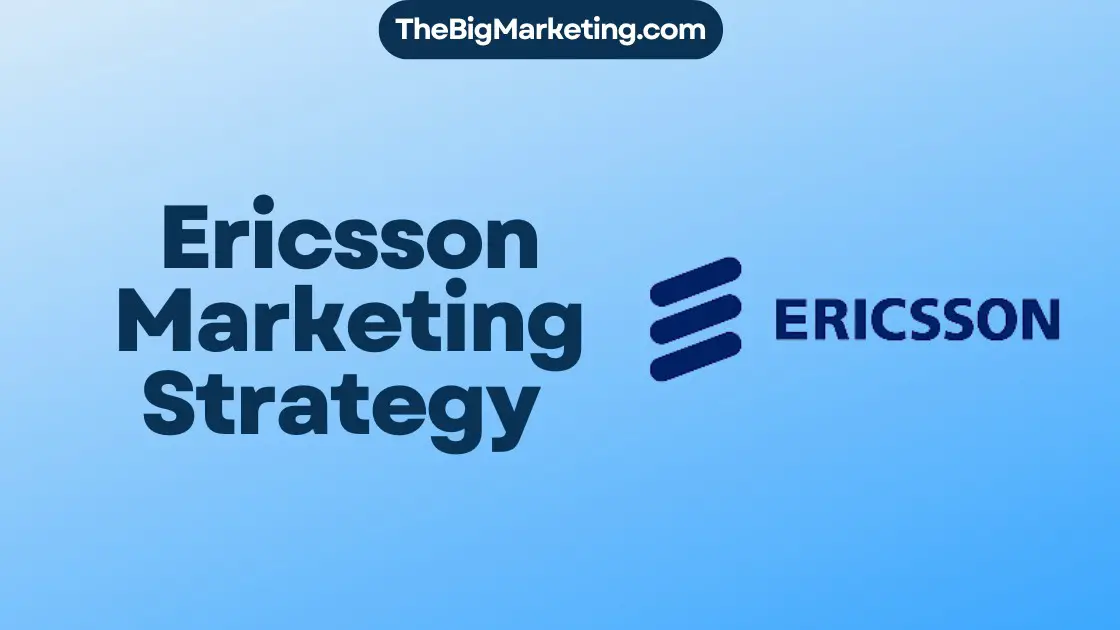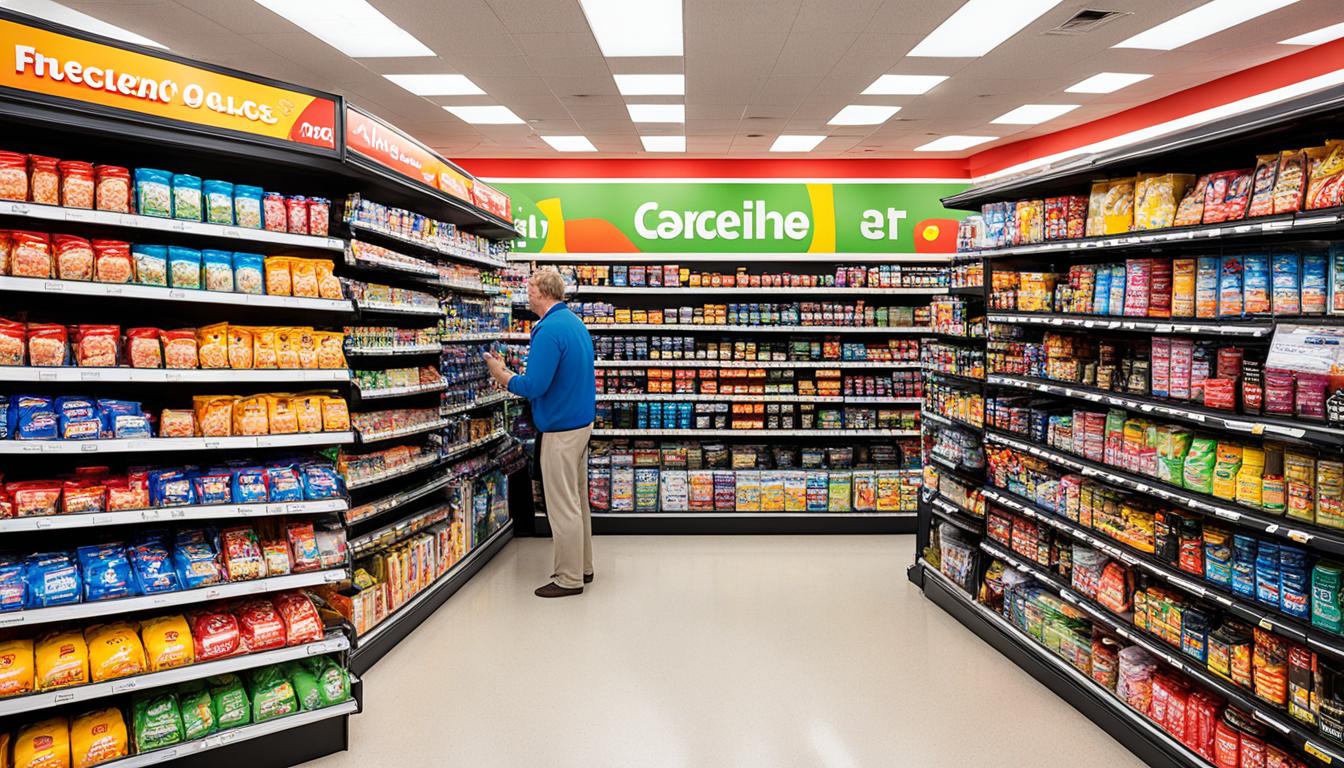Barbie, the iconic doll brand established by Mattel in 1945, has proven itself as a leader in the toy industry for decades. However, with changing preferences in children favoring electronic devices over traditional toys like dolls, Barbie has faced declining sales in recent years. To combat this challenge, Mattel devised a comprehensive branding strategy for 2024 that revitalized the brand and captured the attention of its target audience.
Recognizing the need to adapt to evolving consumer behaviors, Mattel made a bold move by investing more in marketing for the Barbie Movie than on producing the actual film, with an estimated campaign budget of $150 million. This decision proved to be a game-changer, as the movie’s box office earnings surpassed expectations, reaching $165 million in North America and an impressive $337 million globally.
The Barbie movie, released in 2023, was primarily targeted at women in their 20s and 30s, tapping into nostalgia and capturing the hearts of those who grew up with Barbie as their childhood companion. This strategic approach created an emotional connection, reminding the audience of the brand’s mission to inspire young girls to aspire beyond traditional gender roles.
Targeting the Right Audience: The Key to Barbie’s Success
Barbie, the iconic doll introduced in 1959 by Mattel Inc., has become one of the most legendary characters and prosperous brands of all time, generating billions of dollars in revenue. One of the key reasons behind Barbie’s success lies in its effective marketing tactics, brand positioning, and brand identity.
To ensure its continued success, Barbie has strategically targeted the right audience. Rather than solely focusing on young girls, the brand has shifted its marketing efforts toward a specific group known as “Francesca,” cosmopolitan women in their 20s-30s. By targeting this audience, Barbie has been able to tap into a demographic that resonates with the brand’s themes of modern feminism, inclusivity, and social change.
This strategic shift in audience targeting has allowed Barbie to develop a strong brand positioning and identity. By understanding their audience’s passions and addressing the topics they care about, Barbie has been able to foster emotional connections and build a loyal following among Francesca and beyond.
Barbie’s marketing tactics have evolved over the years, adapting to the changing preferences and values of its target audience. One notable campaign that highlighted Barbie’s commitment to empowering women was the “Barbie Sheroes” campaign in 2015. This campaign celebrated female role models and broke boundaries, resonating strongly with the values of the Francesca audience.
In recent years, Barbie has also embraced diversity and inclusivity by offering dolls with different body types and skin tones, reflecting the evolving ideals of society. This approach has further solidified Barbie’s brand identity as a champion of representation and inclusivity.
To effectively reach and engage their audience, Barbie has leveraged various marketing channels, with a strong emphasis on social media. According to Morning Consult, 38% of Gen Zers, who are part of the Francesca audience segment, spend over four hours daily on social media. Understanding this behavior, Barbie has actively utilized platforms such as TikTok, YouTube, and Instagram Reels to connect with their target audience and create viral marketing content.
Moreover, Barbie’s marketing strategy has extended beyond traditional approaches, with extensive collaborations with fashion brands, fast food chains, and even partnerships with gaming platforms like Xbox. These collaborations have not only expanded Barbie’s reach but have also created buzz and excitement around the brand.
To enhance Barbie’s brand recognition and reinforce nostalgia, the brand has capitalized on its extensive media presence. Barbie has starred in numerous computer-animated feature films, short films, online comedies, animated series, television specials, and video games. Additionally, Barbie has inspired hundreds of books and comics, as well as a wide range of derivative toys from Mattel.
Barbie’s success in targeting the right audience through strategic marketing tactics, strong brand positioning, and a well-defined brand identity is evident in not only its financial achievements but also in the emotional connections it has fostered. By staying true to its mission of empowering women and promoting inclusivity, Barbie continues to be a beloved and iconic brand for Francesca and audiences of all ages.
Building Emotional Connections: The Power of Nostalgia
Barbie has maintained a consistent presence in the market for over six decades, captivating the hearts and minds of generations of children. One of the key elements behind Barbie’s enduring success is the brand’s ability to build strong emotional connections with its audience. By tapping into nostalgia, Barbie has cultivated a sense of warmth and fondness that goes beyond being just a toy.
The Barbie brand’s image has been carefully crafted over the years, and its success can be attributed to the deep emotional connection it has fostered with its customers. Barbie’s iconic status as a cultural icon and a symbol of femininity has allowed the brand to transcend generations and become a beloved part of many childhood memories.
Barbie’s commitment to diversity and inclusivity has further strengthened its brand loyalty. By expanding its range of dolls to include different skin tones, body types, and careers, Barbie has shown a dedication to representing the diverse world we live in. This inclusivity not only resonates with consumers on a personal level, but it also sends a powerful message that everyone deserves to be represented and celebrated.
Emotional advertising campaigns have played a significant role in shaping Barbie’s brand image. These campaigns have struck a chord with consumers by showcasing relatable stories and highlighting the emotional connections that Barbie dolls can create. By emphasizing the joy, imagination, and empowerment that come with playing with Barbie, the brand has effectively captured the hearts of both new and existing customers.
The Role of Nostalgia
Nostalgia has proven to be a powerful tool in Barbie’s marketing strategy. The enduring popularity of Barbie dolls across generations can be attributed, in part, to the fond memories and emotional attachments that people have with the brand. By leveraging nostalgia, Barbie has been able to evoke positive emotions and tap into a sense of familiarity that resonates with consumers.
The recent Barbie movie marketing campaign is a testament to the power of nostalgia. The focus was on enticing older audiences to revisit their childhood and relive the magic of Barbie. By emphasizing the feelings of nostalgia and the emotional connection people had with Barbie dolls, the campaign generated increased anticipation for the film and resulted in record-breaking sales.
To further extend the reach of the campaign, Barbie collaborated with various brands, including Moon, Gap, Funboy, Kitsch, and Béis. These collaborations not only boosted the Barbie experience but also tapped into niche audiences that align with the brand’s values. Social proof, through influencer marketing and user-generated content, played a significant role in solidifying the desire to engage with the Barbie movie and brand collaborations. By showcasing the brand’s inclusivity, empowerment, and diversity, the campaign resonated with a broader spectrum of viewers and contributed to making the movie even more appealing.
Building an interactive experience outside of the movie viewing, such as through engaging social media content and interactive games, further strengthened the audience’s connection with the Barbie brand. Barbie’s strategic approach showcased the importance of emotional marketing in connecting with audiences and highlighted the significance of storytelling and authenticity in brand campaigns.
| Key Factors for Building Emotional Connections | Impact on Barbie Brand |
|---|---|
|
Utilizing nostalgia Showcasing relatable stories Emphasizing joy, imagination, and empowerment Promoting diversity and inclusivity |
Strong emotional connection with customers Enhanced brand loyalty Adaptable alongside changing cultural norms Increased appeal to a broader spectrum of viewers |
Crafting Engaging Storytelling: Following the Narrative Arc
One of the key factors in Barbie’s successful marketing tactics and building brand awareness is its ability to craft engaging storytelling that follows the narrative arc. By creating narratives that resonate with their diverse target audience and align with their brand values, Barbie has been able to capture the hearts and minds of generations.
The Barbie movie released in 2023 exemplifies Barbie’s commitment to storytelling. The film follows a traditional three-act structure, with an inciting incident that disrupts the normalcy established at the beginning of the story. Barbie’s character arc challenges beliefs and lies surrounding perfection and imperfection and explores themes of feminism, gender power structures, and existential thoughts. Throughout the narrative, Barbie experiences emotional turmoil and character breakdowns in the Real World, emphasizing the importance of embracing imperfections and challenging societal beauty standards for women.
The use of contrasting elements between Barbie land and the Real World adds depth to the story and highlights the imperfections that make each individual unique. Subplots involving Mattel’s corporate motives and character relationships enrich the storyline, providing additional layers of engagement for viewers.
Barbie’s ability to create engaging storytelling allows her to connect with her audience on an emotional level, eliciting feelings of enthusiasm, empathy, and wisdom. By addressing relevant social issues and showcasing the impact of patriarchy on Barbie Land, the film sparks meaningful conversations among viewers and critics.
The Power of Plot Twists
In addition to following the narrative arc, Barbie’s storytelling is made even more compelling through the use of plot twists. These unexpected turns in the story create moments of surprise and delight for the audience, further engaging them in the narrative and leaving a lasting impression.
By incorporating plot twists strategically, Barbie is able to captivate her audience and keep them eagerly anticipating the next turn of events. These twists not only add excitement but also provide opportunities for character development and exploration of deeper themes. They challenge the audience’s preconceived notions and push the boundaries of storytelling, making the narratives more memorable and impactful.
Embodying the Brand’s Values
Barbie’s storytelling effectively communicates her values of empowerment, inclusivity, and fostering imagination. Through compelling narratives, Barbie empowers individuals to dream big, encourages inclusivity by showcasing diverse characters and perspectives, and fosters imagination by transporting viewers to fantastical worlds.
The film’s storytelling aligns with Barbie’s desired brand perception, reinforcing her role as a cultural icon that inspires generations. The distinctive voice and tone used in Barbie’s stories resonate with audiences, creating an emotional connection that further strengthens brand awareness and loyalty.
Overall, Barbie’s skill in crafting engaging storytelling and following the narrative arc has been instrumental in her marketing success and brand positioning. By leveraging the power of storytelling, Barbie effectively communicates her values and mission, engages with her diverse audience, and leaves a lasting impact on viewers.
Staying True to Mission: Reminding the “Why”
In the ever-evolving landscape of branding, Mattel’s Barbie has managed to maintain its stronghold in the market by staying true to its mission. The Barbie brand’s unwavering commitment to empowering girls and encouraging them to pursue their dreams has been a key factor in its continued success and brand loyalty.
Barbie’s mission goes beyond simply selling dolls. It is about inspiring and shaping the lives of young girls, instilling in them the belief that they can be anything they aspire to be. This dedication to empowering young minds has resonated deeply with consumers, establishing Barbie as a household name for generations.
In recent years, Barbie has made significant strides towards inclusivity and representation, expanding its doll line to reflect the diverse world we live in. The introduction of the Barbie Fashionista line with dolls featuring nine different body types, 35 skin tones, and various alternative looks has been instrumental in promoting diversity and breaking societal beauty norms.
Mattel’s Creatable World collection further exemplifies Barbie’s commitment to inclusivity by offering dolls and accessories that celebrate children’s exploration of non-binary gender constructs. This initiative has not only been well-received but has also opened up conversations about gender diversity and acceptance.
However, despite these efforts, there have been instances where social media feeds under the #BarbieCake hashtag highlighted predominantly white, blonde Barbies, indicating a lack of diversity representation. Recognizing this, branding consultant Jessi Greenlee has taken it upon herself to flood the #BarbieCake hashtag with dolls that reflect real-world diversity and encourage others to join the movement.
Greenlee’s advocacy extends beyond social media endeavors. She plans to donate Barbie Cakes to nonprofits serving children in need, with initial engagements initiated with local Bay Area nonprofits. These conversations with local organizations showcase Barbie’s proactive approach to social impact initiatives and their commitment to making a difference.
The Barbie brand’s success lies in its ability to adapt and meet the ever-changing demands of its audience. By embracing inclusivity and diversity, Barbie has defied the challenges it faced a decade ago and reinvented itself for the modern era.
Moreover, Barbie’s synchronized unveiling of marketing and PR tactics, combined with its massive marketing spend, has ensured maximum reach and engagement. The brand understands that to connect with its audience, it must not only evoke nostalgia but also remain relevant in the digital age.
Studies consistently reveal the importance of purpose-driven brands and their impact on consumer loyalty. According to a study by Zeno Group, a significant percentage of individuals feel a stronger connection to mission-driven brands. This sentiment is echoed by the fact that people are four to six times more likely to purchase, protect, and champion purpose-driven brands over neutral ones.
The Barbie brand’s mission-driven approach has not only resonated with consumers but has also driven tangible results. After the release of a Barbie movie directed by Greta Gerwig, Barbie toy sales increased by an impressive 56% in just two weeks.
As Barbie continues to navigate the ever-changing landscape of branding, it remains committed to empowering girls and embracing its complicated relationship with its customers. By staying true to its mission, Barbie has cemented its position as a brand that not only creates dolls but also inspires dreams and fosters inclusivity.
Surprising and Delighting: The Power of Plot Twists
Barbie’s success as a brand can be attributed to its innovative marketing tactics and its ability to captivate and engage its audience. One of the strategies that Barbie employs is the use of unexpected plot twists, which adds an element of surprise and delight to their storytelling.
In the Barbie movie, the inclusion of a plot twist where Ken is revealed as the unexpected villain was a clever move. This unexpected turn of events not only created buzz and anticipation but also provided a fresh and intriguing narrative for the audience. By incorporating plot twists, Barbie keeps its storytelling dynamic and exciting, leaving the audience eager to discover what happens next.
Barbie’s use of plot twists not only enhances the entertainment value of their movies but also opens up new opportunities for product offerings and collaborations. Each twist in the storyline presents an opportunity for the introduction of new characters, merchandise, and experiences that surprises and delights their audience.
By continuously surprising and delighting their audience with unexpected plot twists, Barbie has been able to maintain its brand success and evolve with the changing preferences of its predominantly female audience. This marketing strategy sets Barbie apart from other big-budget movies in Hollywood, which often lack such creative and captivating storytelling elements.
Through unexpected plot twists, Barbie ensures that their movies resonate with their target audience on both an emotional and intellectual level. These surprises serve as a vehicle to address real-world issues, challenge societal norms, and spark conversations among viewers. By doing so, Barbie extends its reach beyond entertainment and becomes a catalyst for thought-provoking discussions and reflections.
Leveraging Brand Collaborations: Reaching a Wider Audience
Barbie’s success can be attributed to its strategic brand collaborations, which have played a pivotal role in expanding its reach and cultivating brand awareness. Through partnerships with over 100 brands in various industries, Barbie has demonstrated its marketing prowess and ability to tap into new consumer markets.
One notable collaboration was with Warner Bros for a Barbie movie, which became the brand’s top-grossing film of all time, raking in an impressive $1.4 billion at the box office. This successful collaboration not only showcased Barbie’s popularity but also solidified its influence in the entertainment industry.
Barbie has also entered into strategic partnerships with high-end fashion labels like Moschino and Balmain, as well as makeup brands like MAC Cosmetics. These collaborations have allowed Barbie to extend its brand image and appeal to a broader audience, including fashion enthusiasts and beauty lovers.
The impact of Barbie’s collaborations extends beyond traditional industries and into unexpected markets. For instance, Crocs, the popular footwear brand, experienced a surge in popularity within the stiletto heel community after collaborating with Barbie. This collaboration showcased Barbie’s influence in shaping fashion trends and further promoted its brand awareness.
The airline industry is another area where Barbie has made its mark through brand collaborations. FlyNow Airlines partnered with VitaGuard to offer in-flight wellness kits containing immune-boosting vitamins, hand sanitizers, and health tips, in line with Barbie’s emphasis on promoting holistic well-being. This collaboration not only provided a valuable amenity for passengers but also introduced Barbie to a new audience.
Expanding Reach through Cross-Promotions
In addition to individual brand collaborations, Barbie has strategically engaged in cross-promotions with complementary brands and media outlets. By partnering with established names like Gap, Neiman Marcus, and Microsoft, Barbie has amplified its brand message and expanded its reach through diverse marketing channels.
Barbie’s PR team has also been proactive in building relationships with media outlets, influencers, and stakeholders to generate positive media coverage. These efforts have contributed to enhancing Barbie’s brand image and maintaining a strong presence in the market.
An Evolving Marketing Strategy
Over time, Barbie’s marketing strategy has evolved to adapt to changing consumer preferences and behavior. While TV ads were once the primary focus, Barbie has embraced the power of social media and influencer marketing to engage with its target audience.
Authenticity and inclusivity have become key pillars of Barbie’s marketing approach. By embracing diversity and representing a wide range of backgrounds and body types, Barbie has connected with consumers on a deeper level, positioning itself as a progressive brand that resonates with modern values.
Furthermore, Barbie’s marketing team has been successful in managing potential crises and maintaining a positive brand image. This proactive approach has ensured that Barbie remains a beloved and trusted brand in the eyes of its audience.
Expanding Beyond Toys: Diversifying Revenue Streams
Mattel, the parent company of Barbie, recognizes the importance of diversifying revenue streams and reducing reliance on toy sales. To achieve this, Mattel has expanded the Barbie world beyond toys, exploring opportunities in movies, media, and immersive experiences.
Barbie’s collaborations have played a significant role in this diversification strategy. By leveraging partnerships and co-branding opportunities, Barbie has not only expanded its product offerings but also created new revenue streams that align with its brand values.
With its successful brand collaborations, Barbie has proven its ability to reach a wider audience, increase brand awareness, and adapt to changing consumer trends. By continuing to explore creative collaborations, Barbie will undoubtedly remain a timeless and iconic brand in the years to come.
Embracing Multimedia Opportunities: Domination in Digital Space
Barbie’s marketing tactics extend beyond traditional strategies, as the brand fully embraces multimedia opportunities to dominate the digital space. By leveraging digital collaborations and innovative partnerships, Barbie continues to captivate audiences and maintain strong brand awareness.
A key aspect of Barbie’s marketing strategy is the utilization of multimedia collaborations to stay relevant and engage with its target audience. Luxury brand collaborations with contemporary artists have become increasingly popular, offering a fresh and artistic approach to luxury branding. Barbie has successfully tapped into this trend, partnering with Google to create immersive online experiences. For example, users who search for Greta Gerwig or Margot Robbie will be able to interact with Barbie-themed content, generating excitement and brand awareness.
In addition to collaborations with artists and technology giants, Barbie has ventured into the world of hospitality by partnering with Airbnb. The brand created a life-sized Barbie Dreamhouse available for rent, providing fans with the opportunity to experience the magic of Barbie’s world firsthand. This collaboration not only showcased the brand’s creativity but also generated significant online buzz and engagement.
Another multimedia avenue that Barbie has embraced is digital video content. With the rise of digital video consumption, luxury brands have the opportunity to create unique and engaging content that resonates with their audience. Barbie has leveraged this trend by producing high-quality videos that showcase the brand’s values and products. Whether it’s through animated short films or behind-the-scenes footage, Barbie utilizes digital videos to captivate its audience and reinforce brand loyalty.
User-generated and influencer content has also played a significant role in Barbie’s marketing strategy. This rising trend has allowed the brand to build authenticity and credibility by featuring real people’s experiences with Barbie products. From unboxing videos to styling tutorials, user-generated and influencer content has boosted Barbie’s brand awareness and created a sense of community among Barbie enthusiasts.
Furthermore, Barbie has recognized the growing popularity of audio content, particularly in the form of podcasts. Podcasts provide an intimate and immersive experience for listeners, which aligns perfectly with Barbie’s goal of fostering emotional connections. By producing engaging and informative podcasts centered around empowering themes and diverse voices, Barbie expands its reach and remains relevant in the digital world.
To further engage with consumers, Barbie has ventured into the world of branded magazines and blogs. This strategy allows the brand to connect with its audience through editorial content, effectively blurring the line between marketing and storytelling. By mimicking the format and style of print magazines, Barbie creates dynamic websites and blogs that offer readers a unique and immersive experience.
To summarize, Barbie’s domination in the digital space is a result of its strategic approach to multimedia opportunities. By embracing collaborations, leveraging video and audio content, and engaging with consumers through branded magazines and blogs, Barbie continues to be at the forefront of digital marketing in the toy industry.
Conclusion
Barbie’s branding strategy for 2024 exemplifies the brand’s incredible success and its ability to adapt to changing times and values over six decades. By leveraging diverse and inclusive storytelling, embracing digital platforms and nostalgia, nurturing communities, collaborating with influencers, and forming meaningful partnerships, Barbie has reinforced its position as a trailblazer in the industry.
The Barbie movie’s marketing approach, in particular, has set a high standard for brand marketing. By effectively utilizing social media, immersive experiences, and influencer marketing, the movie not only built strong connections with the audience but also addressed the growing demand for diversity and inclusivity in media and advertising.
Other brands are now inspired to adopt similar strategies to create impactful marketing campaigns that engage audiences on a deeper level and build a loyal following. Barbie’s success in forming brand partnerships with renowned fashion designers and collaborating with celebrities further strengthens its influence and reach beyond entertainment.
Barbie’s continued relevance and success can be attributed to its ability to evolve while staying true to its core values. With its diverse range of dolls, memorable branding, and strategic collaborations, Barbie remains an iconic brand that resonates with both new and older generations. It is no doubt that Barbie’s branding strategy will continue to inspire and shape future marketing campaigns in the industry.







